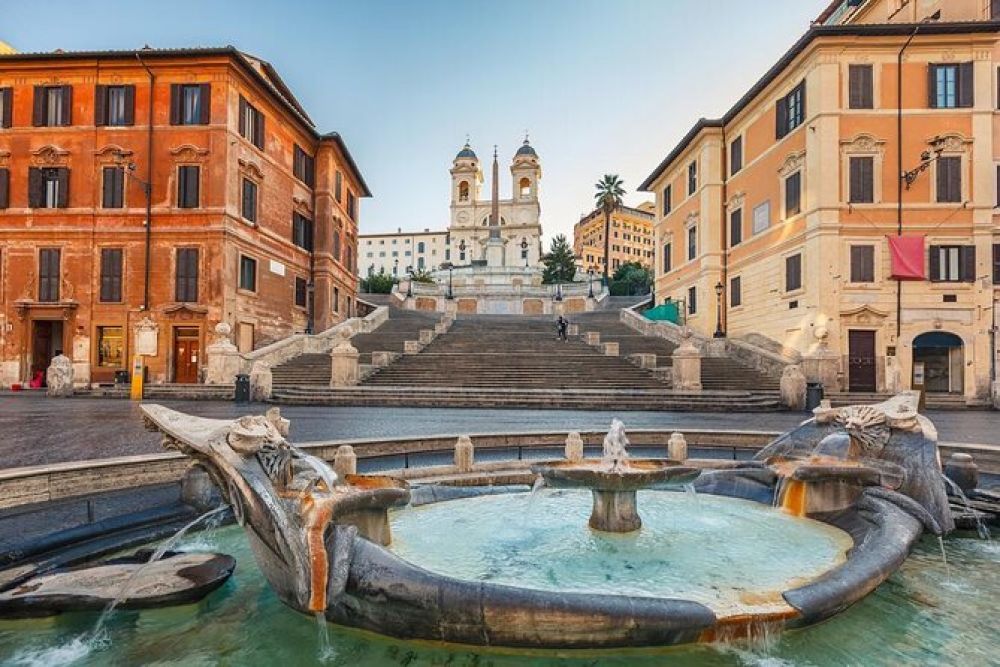

The Spanish Steps, known in Italian as the "Scalinata di Trinità dei Monti," have long been one of Rome's most iconic landmarks, attracting tourists from across the globe. Situated in the heart of the city, they were constructed between 1723 and 1725, designed by the architect Francesco de Sanctis.
In the 18th century, the Spanish Steps were designed to bridge the gap between the Spanish Embassy, situated at the foot, and the Trinità dei Monti church, located at the summit. Over time, their elegant design and the scenic vistas they offered made them a must-see on the Grand Tour - an educational rite of passage for wealthy Europeans and, later, Americans.
By the 19th and early 20th centuries, the steps were a popular haunt for artists, poets, and writers. They became a symbol of Rome's bohemian allure, immortalized in literature and art, which contributed significantly to their tourist appeal. Notable works depicting the steps include the poem "Adonais" by Percy Bysshe Shelley and the painting "Roman Steps" by Constantin Hansen.
The Post-World War II era saw a boom in international travel, and films like "Roman Holiday" (1953), which featured the Spanish Steps, reinforced their romantic image and helped establish Rome as an essential destination for global tourists. Throughout the latter half of the 20th century, the steps endured as a backdrop for countless photographs, enriching their iconic status and driving steady tourism growth.
In response to concerns about over-tourism and wear-and-tear on the historic site, recent efforts have been made to preserve the Spanish Steps. For example, in 2016, after a year-long restoration funded by the fashion house Bulgari, the steps were reopened to much fanfare. Restrictions have also been implemented to protect their integrity, including banning sitting on the steps to reduce congestion and potential damage.
Today, the Spanish Steps remain a top attraction, although the way people visit has changed with new tourism trends. There is an emphasis on responsible tourism, reflecting an increased awareness of cultural heritage and environmental sustainability. Social media also plays an influential role, with visitors frequently sharing their experiences at the Spanish Steps on platforms like Instagram, further boosting their popularity.
As travel continues to evolve, the Spanish Steps may see innovative initiatives such as virtual reality tours and augmented reality apps to enhance the visitor experience while protecting the site. Visitor management and crowd control strategies will likely remain essential to preserve this historic landmark for future generations.
In conclusion, the Spanish Steps have long been ingrained in the fabric of Rome's tourism history. From grand tour destination to cinematic icon and modern tourist hotspot, these steps have weathered the test of time, offering a timeless window into the city's rich cultural past while embracing the future of travel.